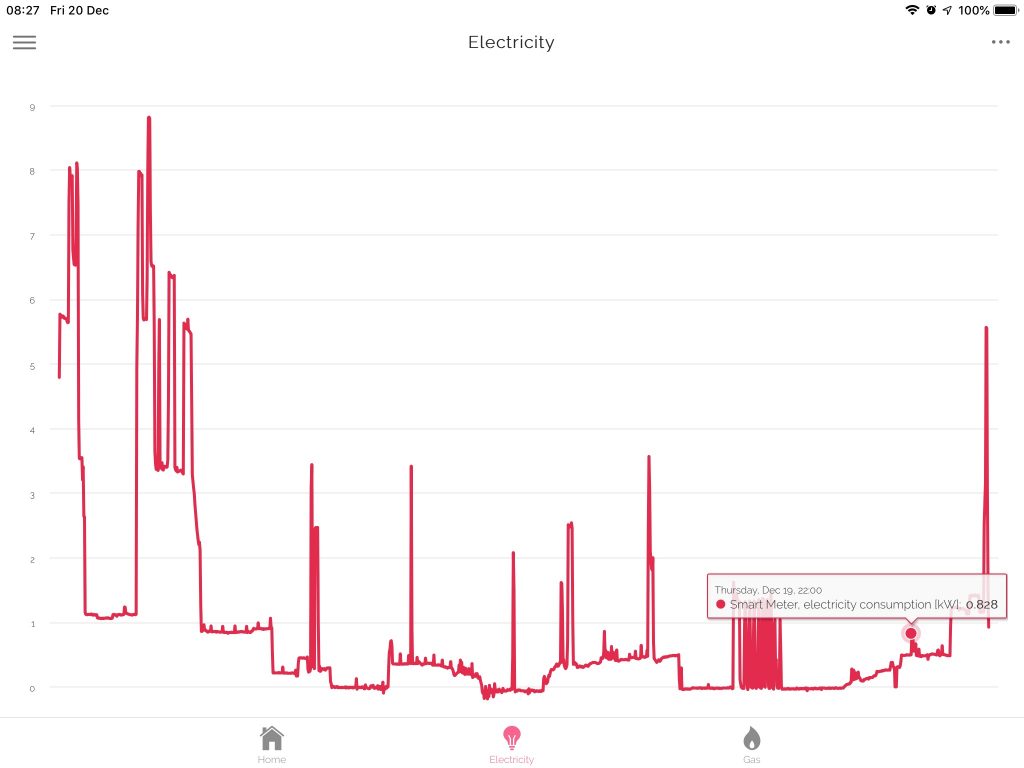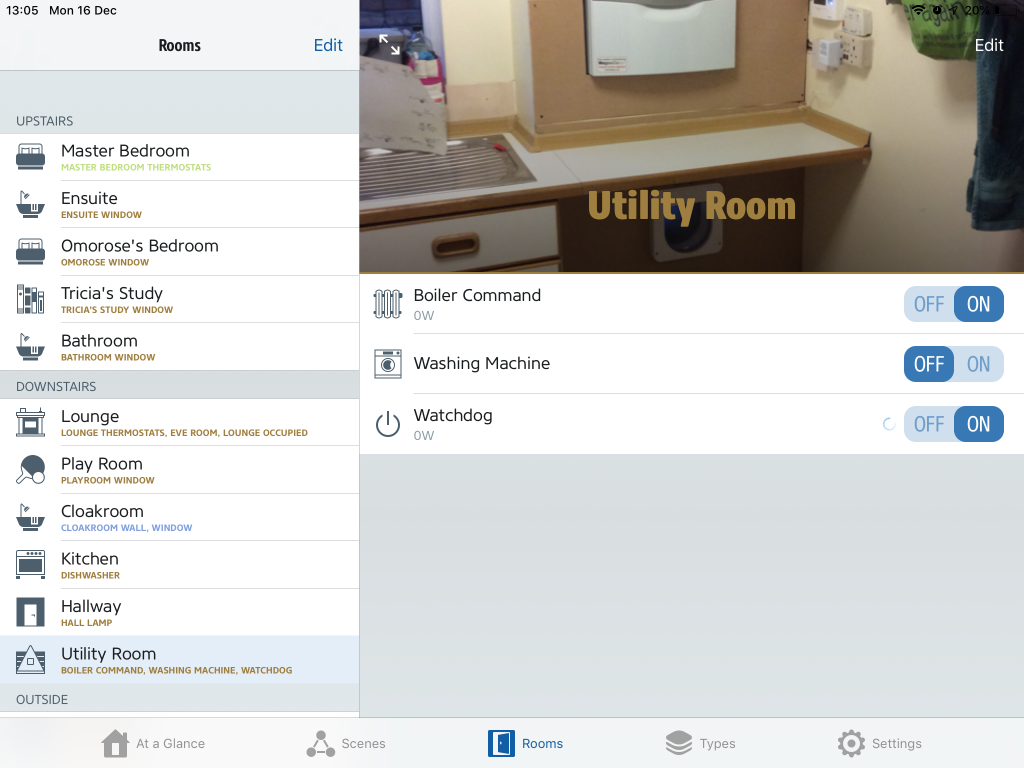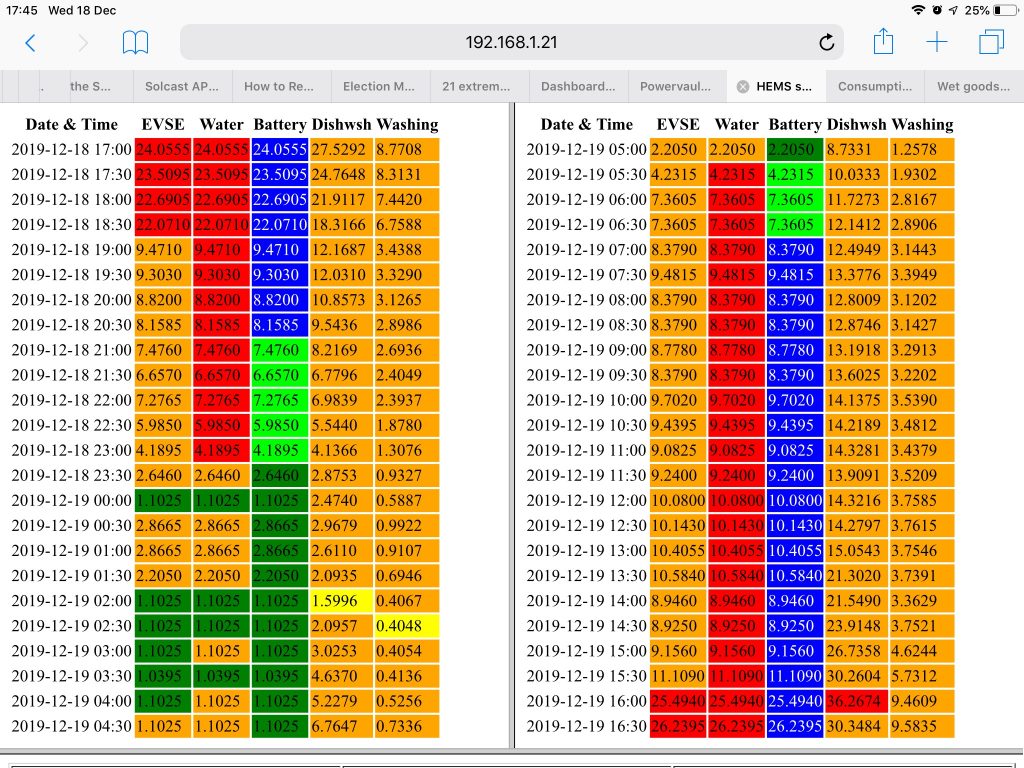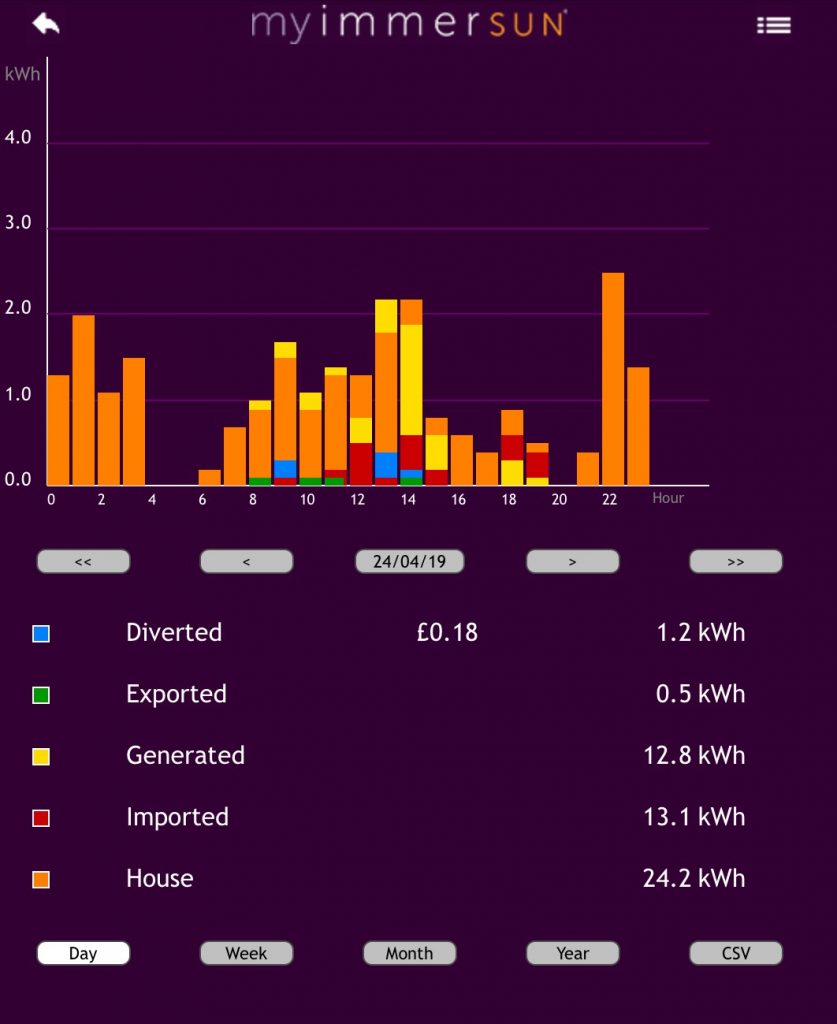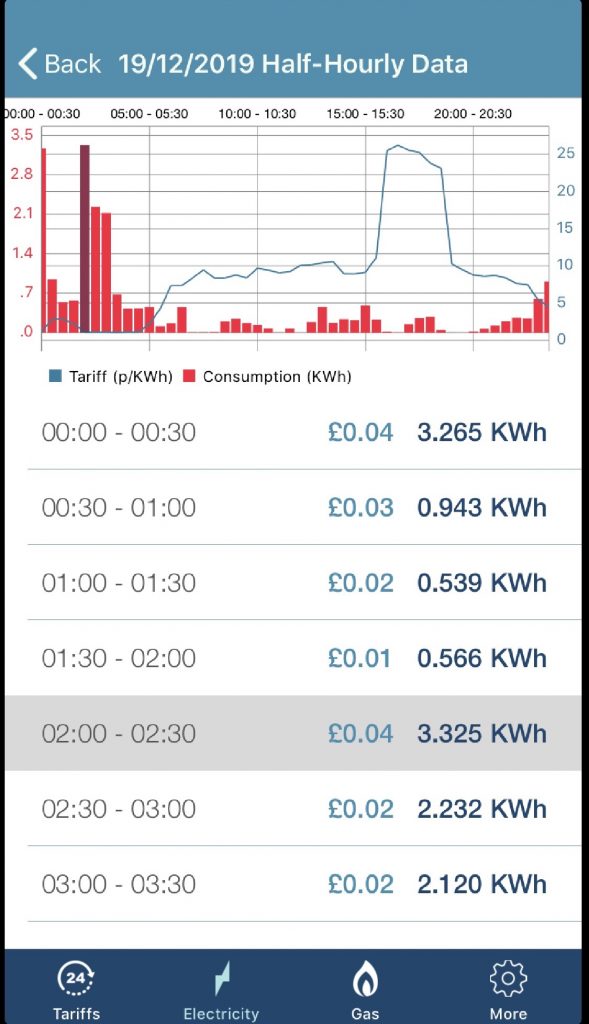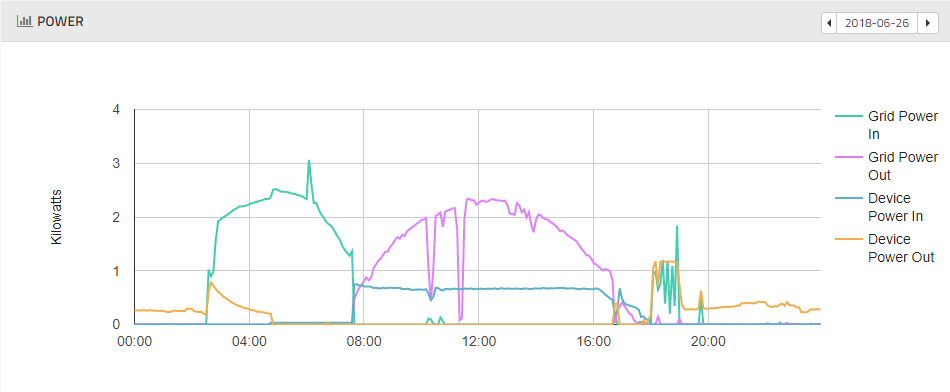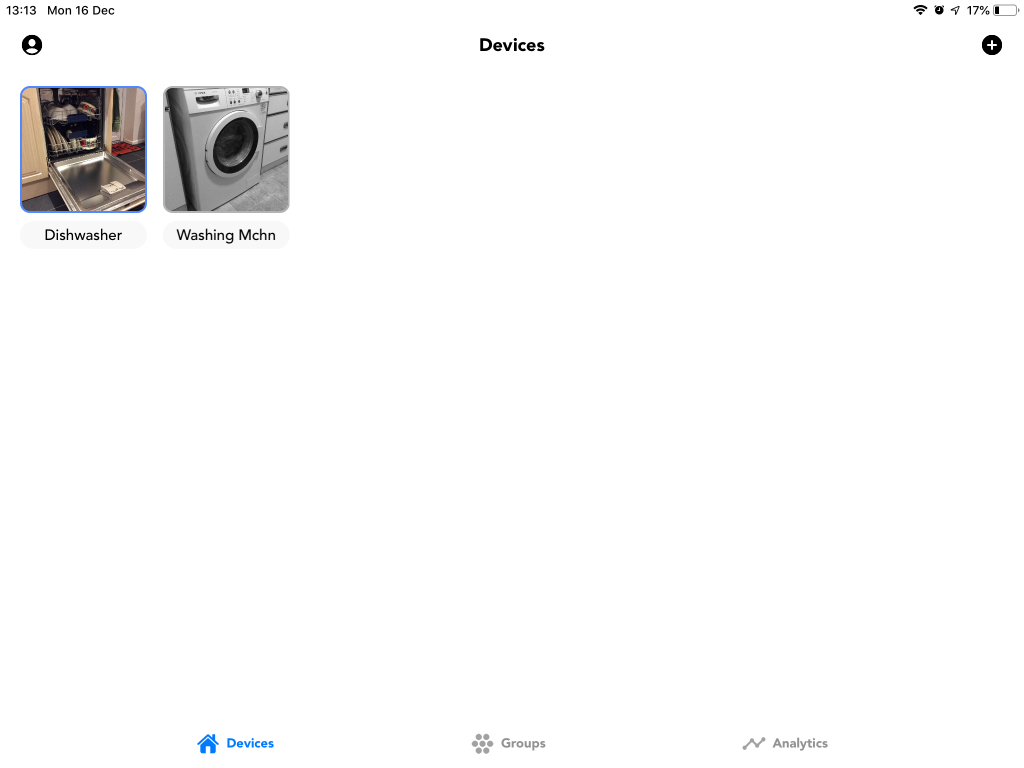One of the consequences of integrating a smart home is the large number of different apps, web portals and potentially sources of APIs involved. The ones I use include:
| Title | App | Portal | API | Purpose | Comment |
| Bright | Y | N | Y | Reads and stores consumption from smart meter. | No price data for my tariff due to smart meter limitations. |
| Eve | Y /3 | N | N | Eve’s alternative to Home for all HomeKit accessories with additional functionality for Eve’s own devices. | I prefer this to Home for editing rules. I use Eve products mostly for central heating control. |
| Home | Y /3 | N | N | Apple’s own app for the HomeKit smart home ecosystem. | Need to refer to device manufacturers own apps (such as Eve or WIFIPLUG) for some configuration and data. |
| HEMS | N | Y | N | My own web portal to view HEMS schedule and status via Apache web-server on Raspberry Pi. | |
| MyImmersun | Y | Y | Y /1 | Control of ImmerSUN power diverter. | Available API provides some measurement and status data as per main screen of the app. |
| Powervault | N | Y | Y /2 | Control of Powervault storage system. | Available APIs provide some user scheduling and status capability. |
| OctoWatchdog | Y /3 | Y | Y | Future cost, and historic costs and consumption (30 prior days) from Octopus (electricity supplier). | APIs provided by Octopus. App developed by an enthusiast using Octopus APIs. Octopus’s own web portal provides historic consumption but does not pair this with cost. Monthly statements show graph of consumption and cost for each day. |
| WIFIPLUG | Y | N | Y | Control and measurements from own brand smart plugs. | Plugs also appear in Home and Eve apps. I use for dishwasher and washing machine. |
Notes to table:
- APIs not officially released. Reverse-engineered by an enthusiast and available on line.
- APIs not officially released. Used as part of a sponsored trial when I first got the battery and re-used by myself with some manufacturer support.
- iOS only. Not available for Android.
Some of these apps have similarities:
- Both Bright and OctoWatchdog show whole of house energy consumption (and potentially cost) derived from the smart meter. However they have differences too. A smart meter sits on two networks: (i) the Wide Area Network (WAN) via which the meter communicates with the energy supplier and (ii) the Home Area Network (HAN) which links the devices in the home (electricity meter, gas meter, CADs/IHD and gateway). Bright connects to the HAN via small piece of hardware called a Glow Stick Wi-Fi CAD and collects its own data in real time and stores its own records of energy consumption in the cloud; while OctoWatchdog involves no extra in-home hardware, and takes data a day in arrears from Octopus not storing anything in the cloud itself. Bright’s USP is the real time consumption and current day’s data (neither of which OctoWatchdog supports), while OctoWatchdog’s USP is the availability of electricity price which isn’t available from the meter.
- Both Eve and Home interact with all devices in the whole HomeKit ecosystem. Eve is best for creating rules and has more ability to configure Eve’s own devices, while Home is best for sharing access with family members. WIFIPLUG’s app is more limited only interacting with their own devices, and thus cannot see Eve or other HomeKit devices.
- Both MyImmersun and WIFIPLUG apps, and the Powervault portal, allow configuration of their own manufacturer devices. They all have, for example, timer capability and data logging. MyImmersun is better for giving a whole-of-home view showing solar panel output and net input to house (so provides a more comprehensive energy monitor), Powervault shows no solar panel output but does give a view of whole-of-home, while WIFIPLUG provides only a view of the energy consumption of devices plugged in to the WIFIPLUGs.

